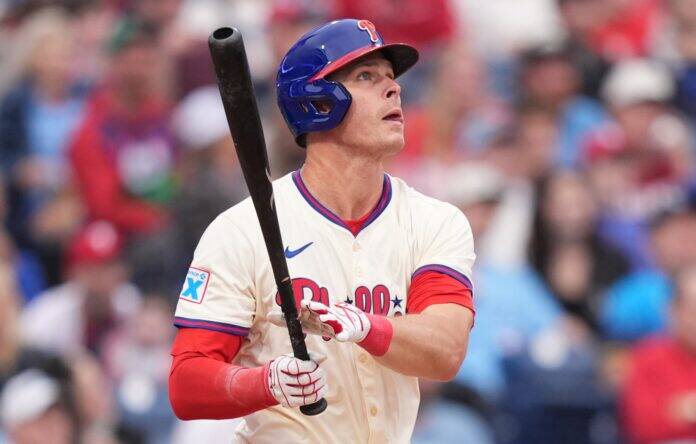
The Philadelphia Phillies are winning games and sitting atop the NL East, but behind the curtain, a few cracks are starting to show—particularly in the outfield. First, there was a public dust-up between Nick Castellanos and manager Rob Thomson. Now, it’s newcomer Max Kepler voicing clear frustration over his usage.
Kepler, signed to a one-year, $10 million deal this past winter, says he came to Philadelphia under the impression he’d be the Phillies’ everyday left fielder. And while he’s been the primary occupant of the position by total appearances, his recent playing time tells a different story.
“I Was Told I Was Going to Be the Starting Left Fielder”
Kepler hasn’t been shy about expressing his displeasure. Speaking to reporters twice this past week, he said the club’s deployment hadn’t matched the messaging from when he signed.
“I signed here being told that I was going to be the starting everyday left fielder. That’s why I came here,” Kepler said Friday, reiterating comments from the day before. He’s been benched against left-handed starters nearly all season, with just three starts against southpaws and none since April 2.
To be fair, Kepler has started the majority of games overall. Of Philadelphia’s 333 plate appearances from left fielders this season, Kepler has logged 236 of them. In total, he’s made 273 plate appearances, enough to qualify for league leaderboards. Manager Rob Thomson defended his usage by noting, “I kind of consider that a starter.”
The Bat Hasn’t Backed the Title
The friction here isn’t just philosophical—it’s performance-based. Kepler’s 2025 stat line stands at .213/.304/.383 with nine home runs and an OPS+ of 88. That’s 12% below league average, and it’s even more troubling, considering left field is traditionally a bat-first position. Against right-handers, where he’s supposed to thrive, he’s hitting just .210/.313/.390.
The reality? The 32-year-old is in decline, and his career-long struggles against lefties (a .211 average and .616 OPS vs. LHPs in his career) only reinforce the Phillies’ decision to platoon him. With right-handed-hitting outfielders waiting on the bench and every game potentially shifting the NL East balance, Thomson is leaning hard into matchups—and that means Kepler’s role stays flexible.
Contender’s Dilemma: Chemistry vs. Competition
The Phillies aren’t out to hurt feelings—they’re out to win a division. At 48-34, they entered Saturday with a razor-thin half-game lead over the Mets. The margin for error is slim, and the race for the first-round playoff bye is already in motion.
Thomson is tasked with maximizing every edge, and that includes lineup construction. If that means sitting a veteran in his 30s who’s not producing, so be it. The clubhouse dynamics might get tense, but the standings don’t care about sentiment.
Kepler, meanwhile, is stuck in that awkward space where expectations meet reality. He wants the at-bats to get into a rhythm—but the team needs results now, not later. He’s still getting the bulk of the work in left, but the Phillies are clearly managing his exposure to left-handed pitching. If his production doesn’t turn, it’s unlikely that’ll change.
Kepler’s Role Isn’t Shrinking—But It Isn’t Expanding Either
The Phillies didn’t sign Max Kepler to be a platoon piece. He didn’t come to Philadelphia expecting one. But that’s what the numbers—and the moment—demand. And in a pennant race, that’s all that really matters.


